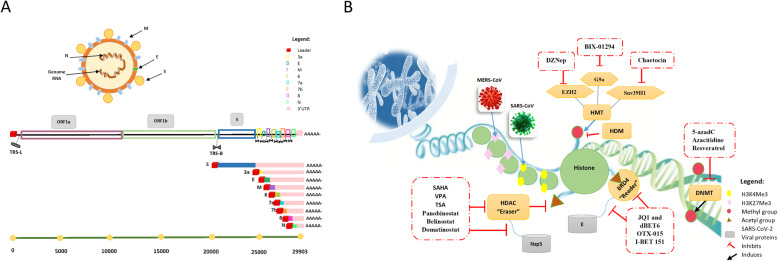Fig. 1.
Epigenetics in coronavirus replication and targeted therapies. a SARS-CoV-2 genomic map, canonical subgenomic RNAs, and virion structure. Both ORF1a and ORF1b are translated from the genomic RNA. Eight subgenomic RNAs are formed in addition to the genomic RNA. b Epigenetic marks and their therapeutic control in HCoV infection. This figure illustrates the epigenetics landscape during coronavirus replication through representing various epigenetic targets (DNMT, HDM, HDAC, and HMT) and their regulation by epigenetic therapy (HDACi, DNMTi, and HMTi). Inhibiting some epigenetic targets leads to a decrease in viral replication load; thus, acting as a vital therapeutic strategy in treating coronavirus infected patients. MERS-CoV in contrast to SARS-CoV increases the repressive epigenetic mark H3k27me3 and decreases the active mark H3k4me3 thus impeding transcription and expression of ISGs. BRD4, a bromodomain and extraterminal (BET) protein, is involved in histone acetylation; besides, it binds to protein E of SARS-CoV-2 accelerating the latter’s entry. Nsp5 binds to HDAC2 and inhibits its entry into the nucleus affecting IFN response

